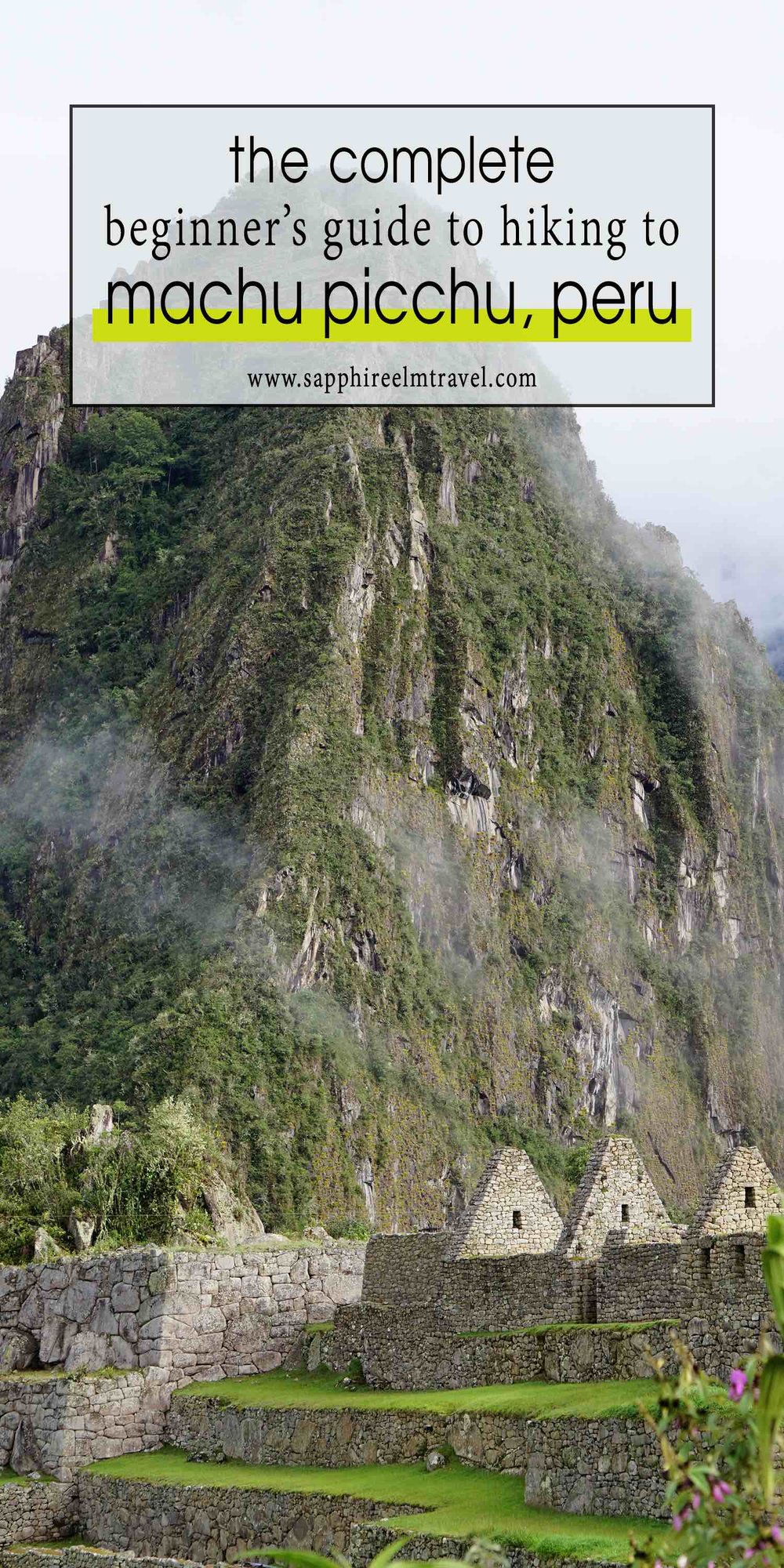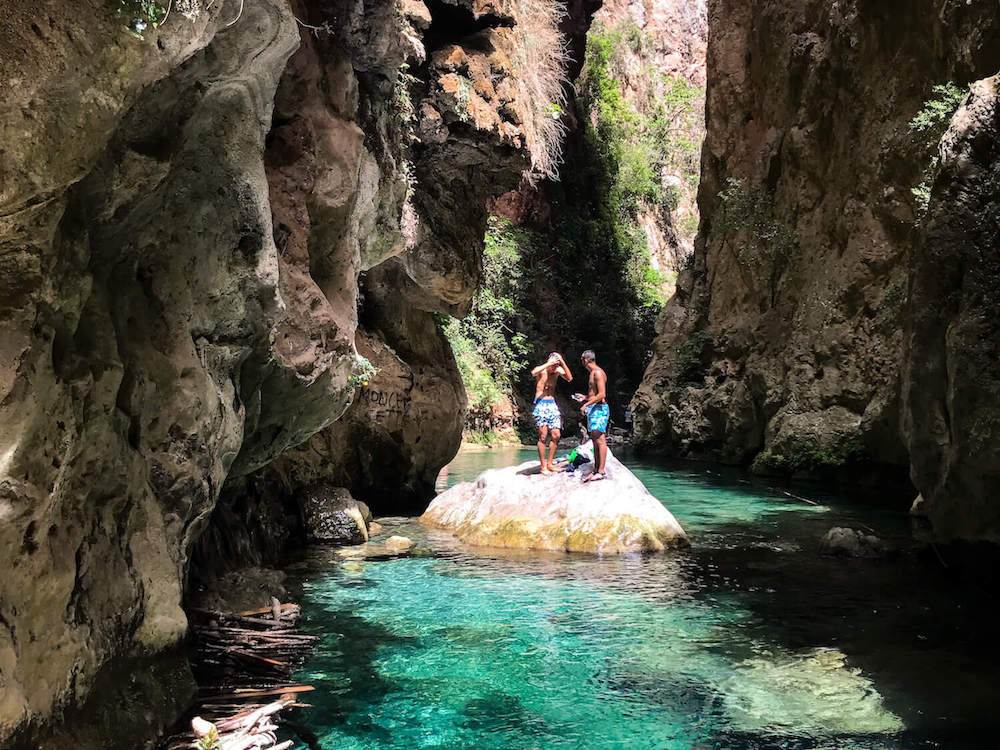The Complete Beginner's Guide to Hiking to Machu Picchu Peru
/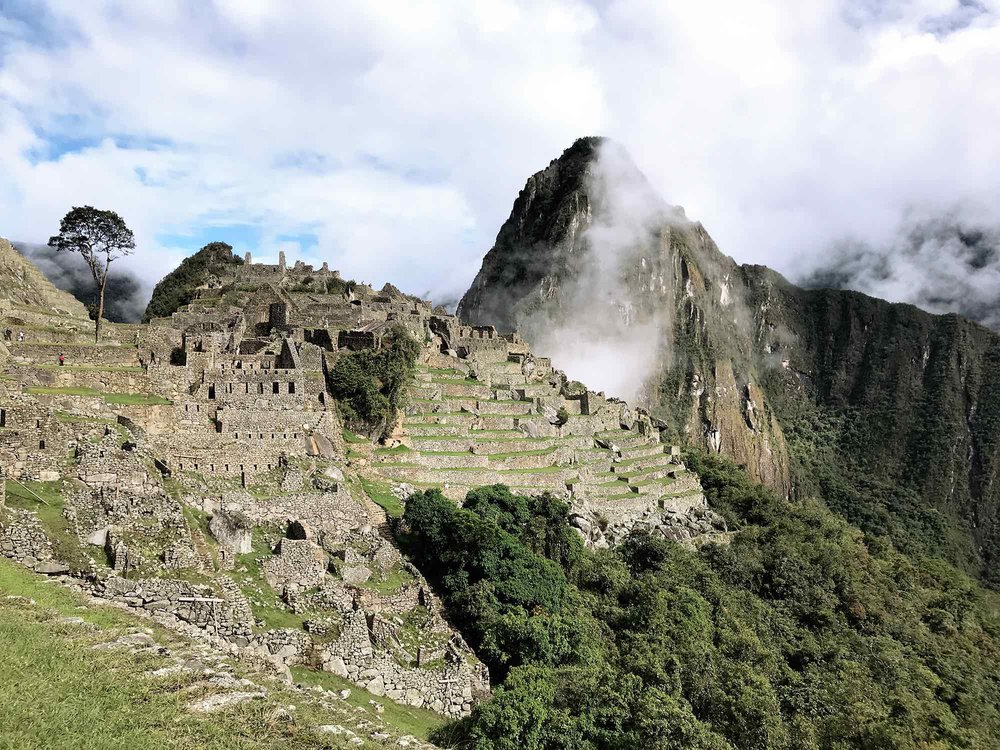
3:30 am. The wakeup call, my cell phone alarm abruptly ringing a familiar tune beside my pillow.
It’s still pitch black outside. The air frigid from the night, I roll over groggily to put on another sweater layer, brush my teeth, and grab my pack before getting picked up to begin the four-day trek to hike to Machu Picchu.
Although half asleep, I could feel the anticipation start bubbling over inside of me.
Images of trekking through the mighty Andes Mountains flashed before me. Mountains as majestic, powerful and elusive as history itself, guiding me through an epic adventure towards an archaeological site that has shown up in my wildest dreams over the course of a decade.
I couldn’t believe today was the day. Today I would take the first step to a journey as iconic as they come.
Trekking to Machu Picchu Peru
I didn’t know exactly what to expect. I was prepared for rain, altitude sickness, hunger, bug bites, and anything else nature could throw at me.
I looked enthusiastically around the bus at the people I would be sharing in this experience.
After roughly a two and a half-hour car ride to Mollepata where we had a quick breakfast and opportunity for last minute supply shopping, and another one hour drive to the place where we’d begin the trek. Once the bus parked, we eagerly jumped out of the vehicle eager to start the trek.
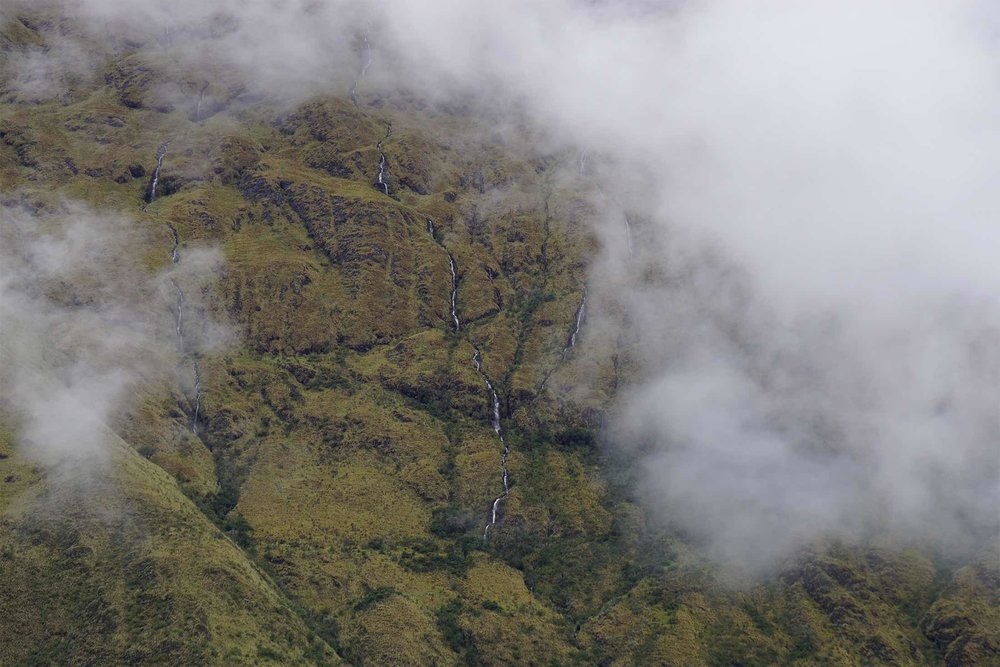
Already at just over 3,000m (9850 feet), the start of the trek is no walk in the park although the path is just a small, steady and gradual incline.
The group huffing and puffing after only a couple minutes of walking uphill at this altitude, a small sample of what was to come.
Luckily the incline of this first day was short, after only 45 minutes of walking the trail leveled out for the next 3 hours of the trek until we reached camp for the night. The hills were covered in thick, soft green grass and cushioned moss providing a feeling of serenity as we climbed the hills.

The rest of the late morning and early afternoon was spent walking in awe of my surroundings. These mountains provided me with ample opportunities for photos and moments of gratitude.
After arriving at camp, the cooks prepared us with lunch followed by some down time before hiking up to Humantay Lake and Glacier; a 5km (3.1 miles) roundtrip hike.
Perhaps it was the altitude, or perhaps it was eating a full meal, or perhaps it was as simple as the mountain’s incline – either was it was a rough hike up. I peer behind me to see my group huffing and puffing as deeply as I was. Luckily I had a group member who was more fit than I that I was encouraged to keep up with.
Weaving between the mountains, horses grazing on the hills, we crossed a river by jumping between wet rocks and followed the discreet mountain trail to the lake.
Humantay Laguna is one of the most beautiful places in the Andes Mountains. The bright blue-green glacial waters shone brilliantly even in a stormy grey afternoon. Horses roamed freely on the electric green grasses that covered the bases of the majestic snow-capped mountains.
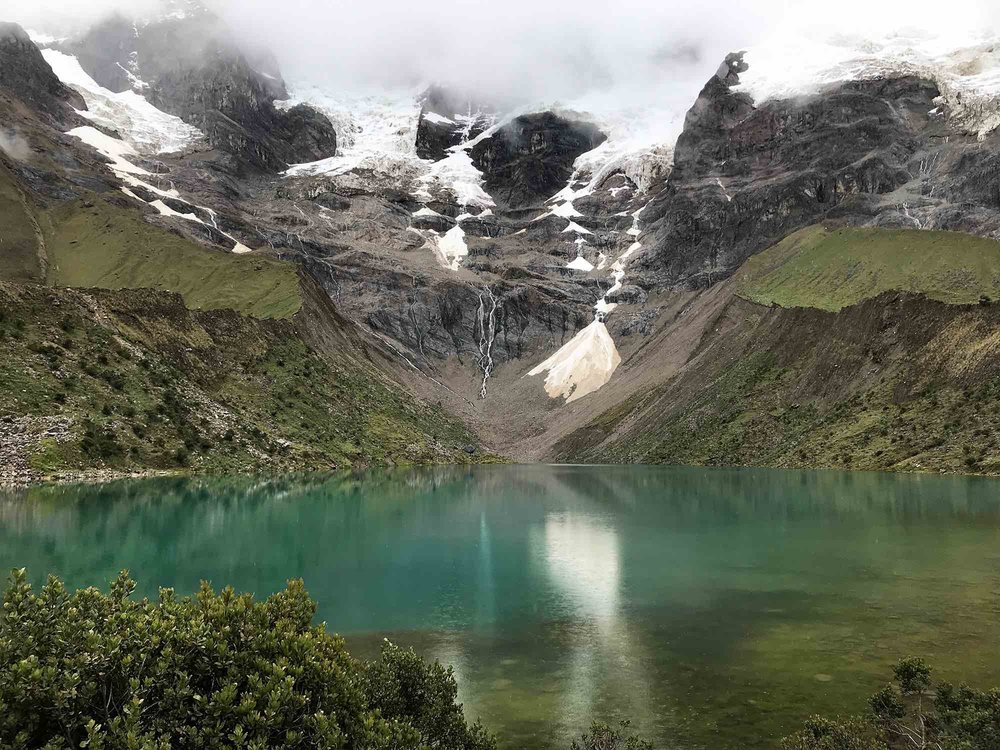

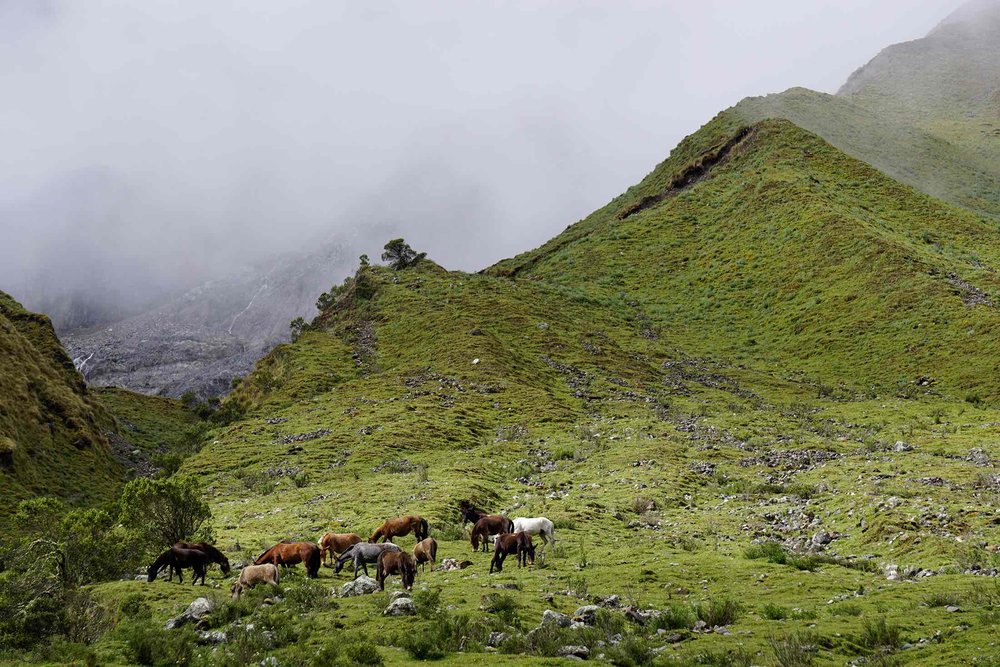
I sat there at the heart of the glacier in complete awe and surrender, appreciating this place and this moment.
This was a magnificent place, traversed by only the luckiest of people over the course of history. I was in disbelief I was here, disbelief that this was the first day of hiking to Machu Picchu.
I felt swells of joy and gratitude overcome my body. I felt a lump in my throat, I was speechless, and my heart was practically bursting out of my chest.
At this moment I knew I made the right choice in hiking Salkantay over “The Inca Trail”. I was meant to be here in this moment.
As the sun was setting we headed back to camp for group dinner. After hours of chatting and playing games, we went to bed under a clear sky brimming with starlight.
Sleeping at this first camp of the Salkantay Trek was the coldest night of my life. Even sleeping in 2 layers or pants, 4 layers of long sleeves and sweaters, 2 pairs of socks, gloves, a beanie, one large alpaca scarf over my sleeping back and one towel under my sleeping bag I was still cold. Freezing. I don’t think I slept more than 2 hours combined as I spent most of the night shivering.
TRAVELERS TIP: I rented a sleeping bag. I assumed the bag would be optimized for these weather conditions. I was wrong. Bring your own sleeping bag, made for at least -20C conditions.
Day 2 I awoke to rose and violet colored skies lighting up the Humantay Glacier. Again, thank you, Universe for views like this.
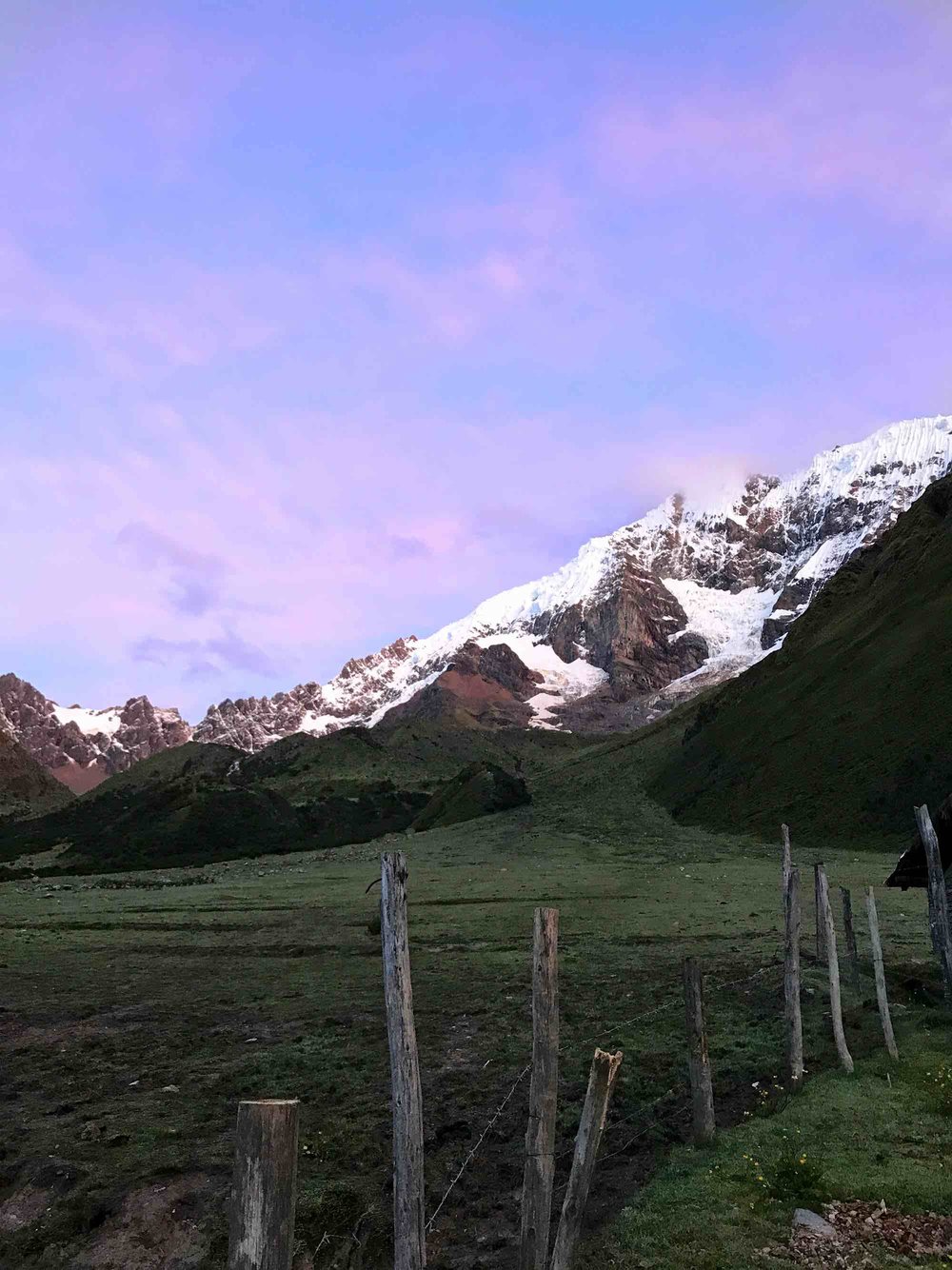
We continued trekking on the winding path between grandiose mountains, making my peers look insignificant/like tiny ants/inconsequential/meager in comparison. The cold air again performing the role of keeping me awake, but now I was grateful for the energizing stimulation.
All morning the sight of Salkantay Pass loomed in the distance.
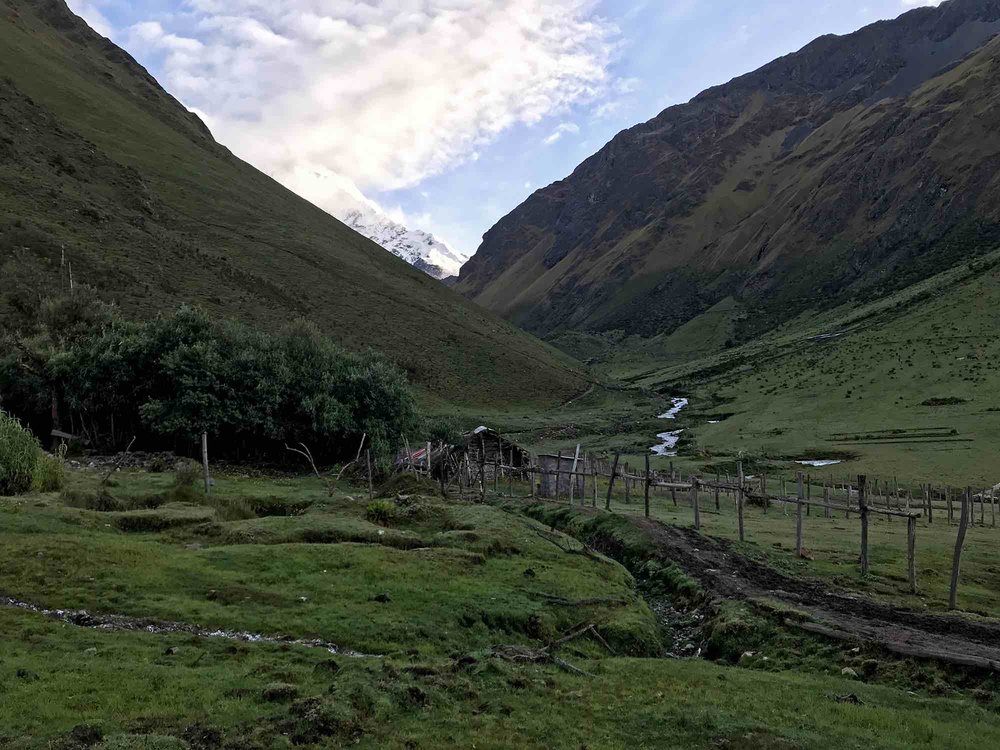


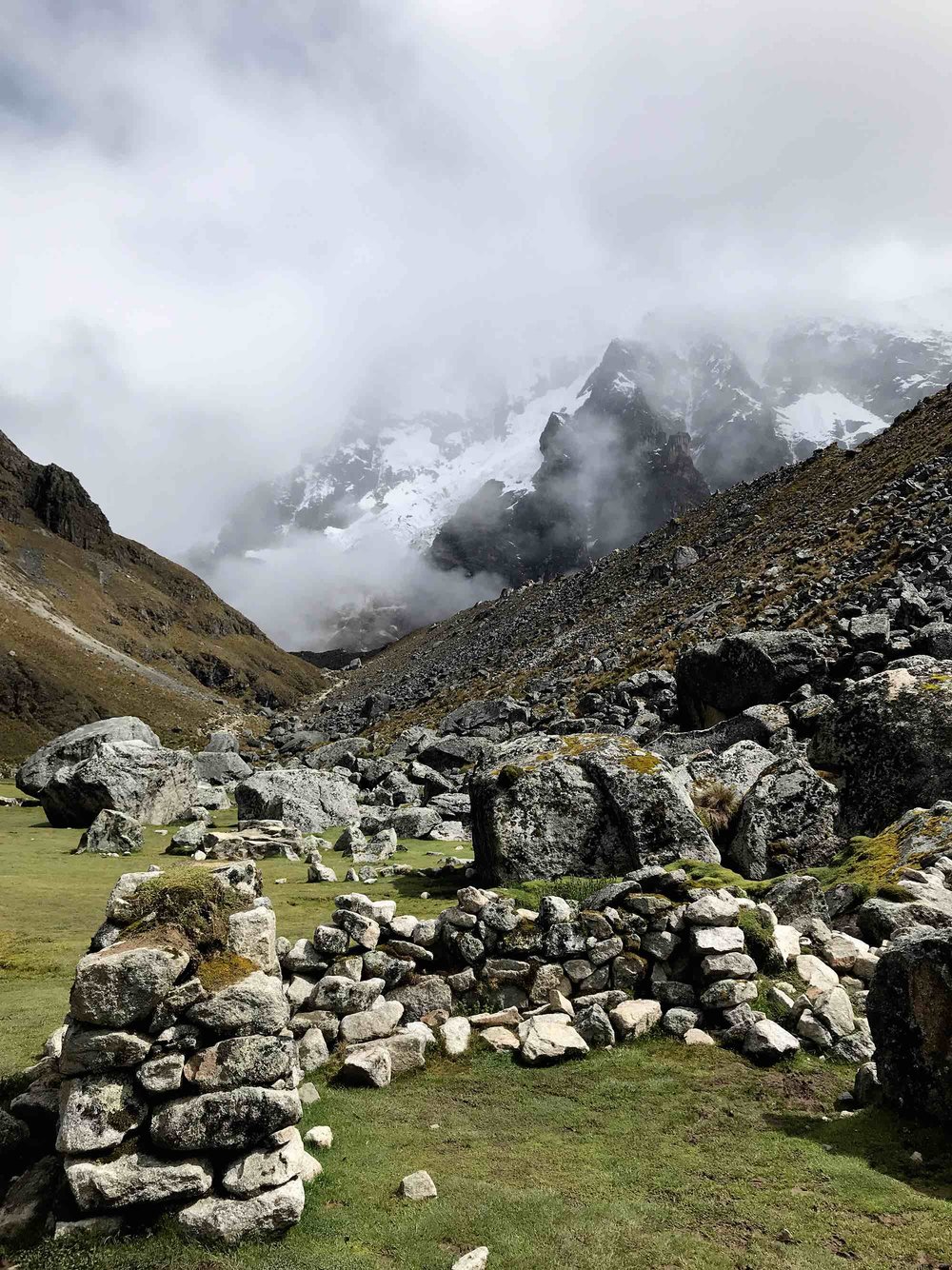
The agenda; climbing 7 km of difficult ascent from 3,900 meters to 4,630 meters through the rocky, green valley, snowy mountainous peaks and Inca ruins.
Satisfying high fives and group hugs, photo opportunities, and the sharing of snacks await at the peak.
After some rest and another fascinating lesson on the Incas, we began the 5km descent through fields reminiscent of Ireland with its rich green landscape spotted with white from sheep and cows, flowing rivers and rocky patches to our lunch spot.
During lunch, the rain really began to pour, yet we still had another 10 km to reach the campsite.
We put on our plastic rain ponchos (sorry, planet Earth!) over our rain jackets. The most prepared hikers had rain pants.
We continued on our way into the cloud forest, the upper part of the Amazon rainforest, which offered a dramatic change in landscape from the morning.
The rain was warm, even wet it was a welcome relief from the bitter, piercing cold of the previous night which still lingered in my bones the first half of the day.
This second day, the vast range of climates is shocking and spectacular as you are truly hiking from the mighty Andes Mountains to the Amazon Rainforest.
Day 3 begins with another early start but this time we’re greeted with a very flat and easy hiking day. The biggest hurdle this day is crossing the several impromptu rivers, leaving you with the options to strategically find logs or bigger rocks to step on in hopes of not getting your feet soaking wet, which is unlikely to be successful, or to take off your shoes and walk barefoot on the jagged river rocks and bare dirt and pebbles in your shoe for the next few hours.
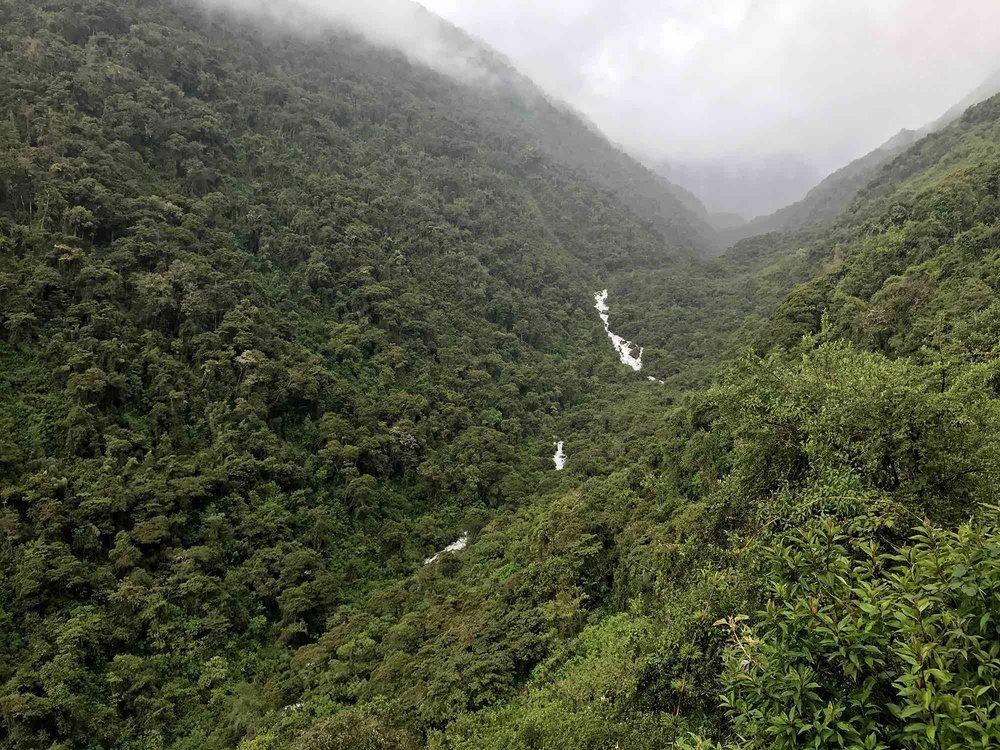
Since it’s by no means a strenuous walk, today gives the group ample opportunity to chat with different people in the different segment of the larger group.
We eventually stop for lunch and freshly grown and brewed coffee. We buy beers and chat ferociously as we wait for lunch to be served.
That afternoon is where the 4-Day Trekkers and the 5-Day Trekkers separate. I chose to do the 4-day trek for a number of reasons including time constraints.
Both groups get a car/bus ride after lunch, only the location for each group varies. 4-Day Trekkers get a ride to Hydroelectrica where they will walk 10 km along the train track to the town of Aguas Calientes which serves as the primary town and rest stop for Machu Picchu.
5-Day Trekkers will get a ride to the next campsite, then hike to the nearby hot spring Santa Theresa. Their next day (Day 4) includes the option to hike or zip line in the morning, then they make their way to Hydroelectrica where they’ll complete the 3-hour walk to Aguas Calientes.
Out of roughly 20 people, 6 of us did the 4-Day option so we got to stick together for the rest of the trek.
The 10 km walk from Hydroelectrica to Aguas Calientes is kind of an unusual experience.
You hike along the river between mystical, ancient mountains. It’s easy to get lost in your own head enjoying the wonder of the nature surrounding you. But you’re often pulled back into reality as the train often whooshing by and you’ll have to get off the tracks. The same train that takes passengers to Machu Picchu, and you’re reminded of the significance of where you’re going.
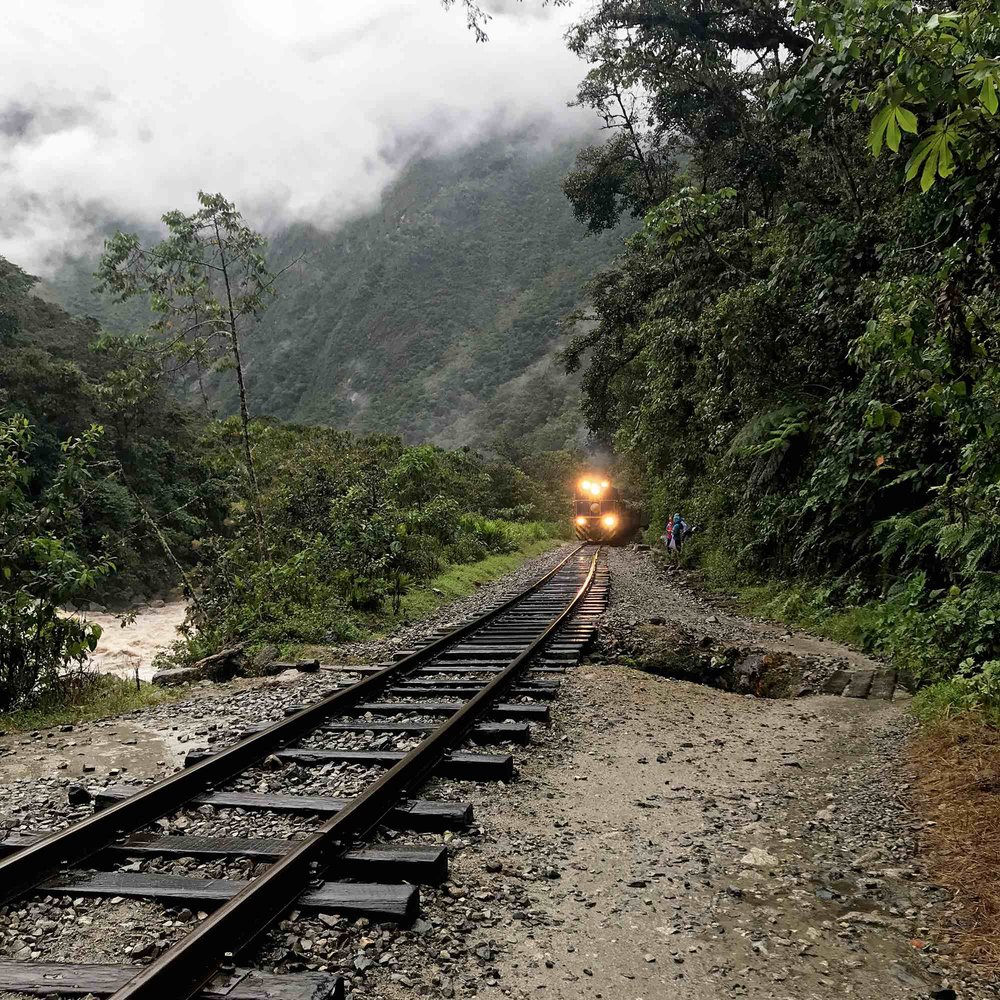
We arrived in Aguas Calientes in an impressive two hours, just in time for a well-deserved shower and dinner before getting some much-needed sleep before a very early start the next day.
Additionally, if you’re tired you have the option of taking the train from Hydroelectrica to Aguas Calientes, but after everything you’ve been through this portion will feel like a breeze!
Visiting Machu Picchu
The final day of the trek to Machu Picchu is the earliest of them all, the day when you’ll finally get to see the long awaited, highly anticipated UNESCO World Heritage Site and one of the New Seven Wonders of the World, Machu Picchu.
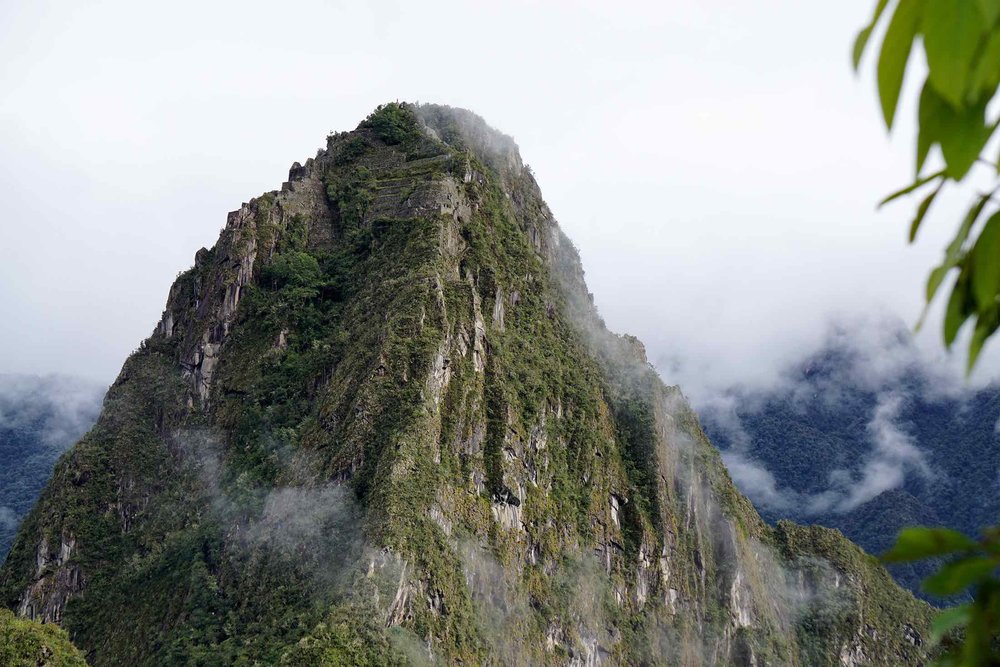
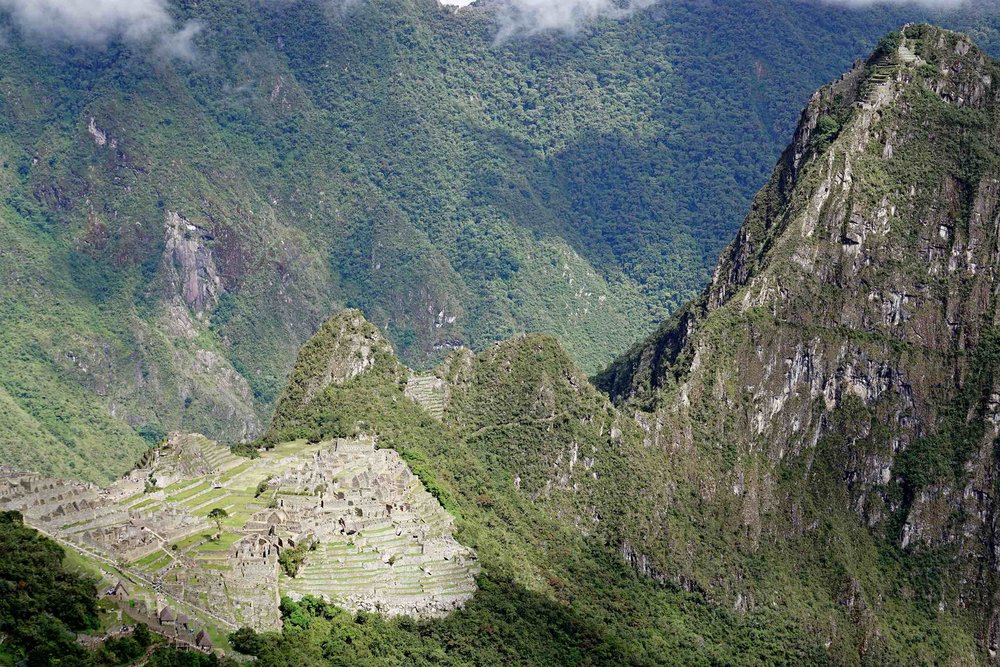

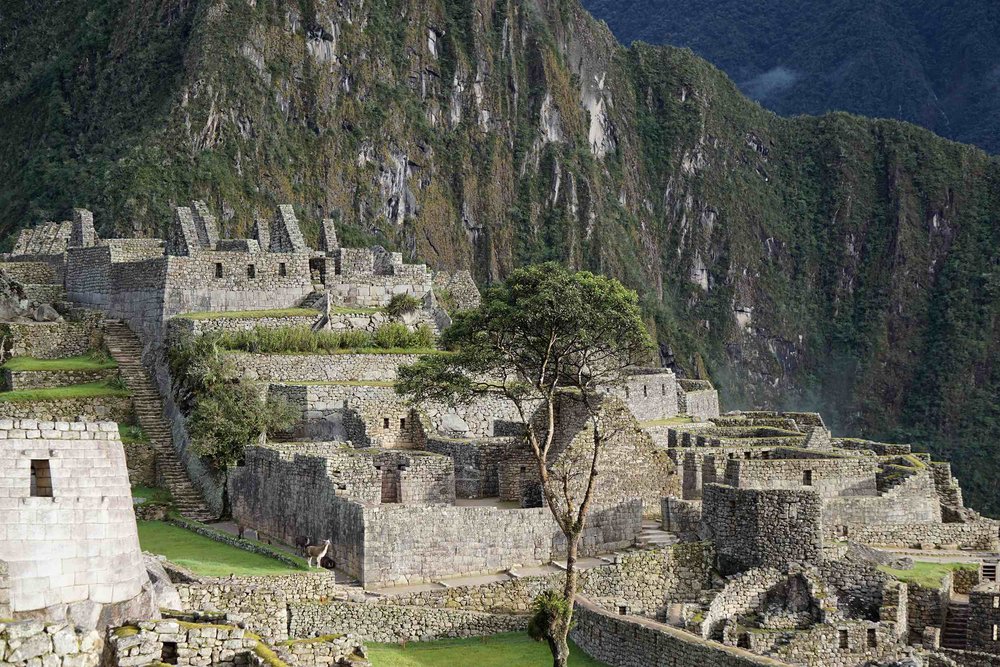
Machu Picchu opens at 6 am for the first of the days’ groups. Machu Picchu has two ticket options per day; option one is 6 am to noon and the second from noon to 6 pm.
There are two options of getting from Aguas Calientes to Machu Picchu entrance. One is the bus for $12 USD each way, and the second is to hike it.
For those hiking it, it takes roughly 45 minutes to climb the roughly 2,000 steps.
The bridge entrance opens at 5 am so if you’re hiking up to the top, be in line by 4:30 am in order to be at the front of the line and therefore be into Machu Picchu before the massive crowds.
Wear layers as it’s freezing in the morning, but within 10 minutes of climbing the stairs you’ll most likely want to strip down to your tank top.
Alternatively, you can take a bus from Aguas Calientes to the entrance. The bus costs $12 USD (in 2018) and takes roughly 25 minutes. The first bus leaving at 5:30am. The line for the bus is very long, it is recommended to be in line by 4:30 am to be among the first people to the entrance.
There are truly no adequate words for the experience of walking through this ancient civilization. The first two hours you’ll explore the site with your group for a guided tour, and then the rest of the time you have on your own.
You could walk around for hours and discover quiet corners and wild alpacas.
Other than hiking to the Sun Gate, I mostly sat at different parts of the site to marvel at this dream come true. My legs were tired, my spirits were high and my heart was full.
Your ticket allows you to be in the archeological site until noon, however if you’re going back to Cusco you need to leave the site by roughly 11 am. But as you’ll have been in there for 5 hours, it is quite enough. The hike down from the site and then back to Hydroelectrica will take roughly 3 hours. Make sure to grab lunch and/or snacks for the road, as it’s roughly a 6-hour car ride back to Cusco.
How to Get to Machu Picchu Peru
Machu Picchu is located in southern Peru, roughly 80km northwest of Cusco.
To get to Machu Picchu, the two most popular options are to hike or take a train. However, you can also get to Machu Picchu by bus, and a combination of walking and the train.
There are several options for getting to Machu Picchu Peru:
- Inca Trail Classic 4 Days or Short 2 Days
- Salkantay Classic 5 Days or Short 4 Days
- Inca trail and Salkantay 7 Day Combination
- Train directly from Cusco
- Bus to Hydroeletrica and walk 10km or train to Aguas Calientes
- Many more options of getting to Machu Picchu
Depending on your time constraints, preferences and fitness levels, the two primary was of getting to Machu Picchu are a multiple day trek prior to arriving at the UNESCO World Heritage Site, and the other option is only a few hours sitting effortlessly on a train.
Personally, my experience at Machu Picchu would have been incomplete without the days trekking through the mountains, lakes, rivers, rainforest and glacier.
Without a doubt, the Inca Trail is the most famous, popular and crowded trek to Machu Picchu. Salkantay is the second most popular option, and a lot less crowded than the Inca trail.
For hiking to Machu Picchu either with Salkantay or Inca, you should be in a reasonable level of fitness but age is not a barrier. You do not need to be an expert hiker or have done several multi-day treks in order to complete a 2, 4 or 5+ day trek to Machu Picchu.
My advice if you want to trek to Machu Picchu is to spend a few days in Cusco beforehand getting acclimated to the high elevation, and to have a good and tough mindset. The hike will be challenging but if you are in the right motivated mindset, you can do anything.
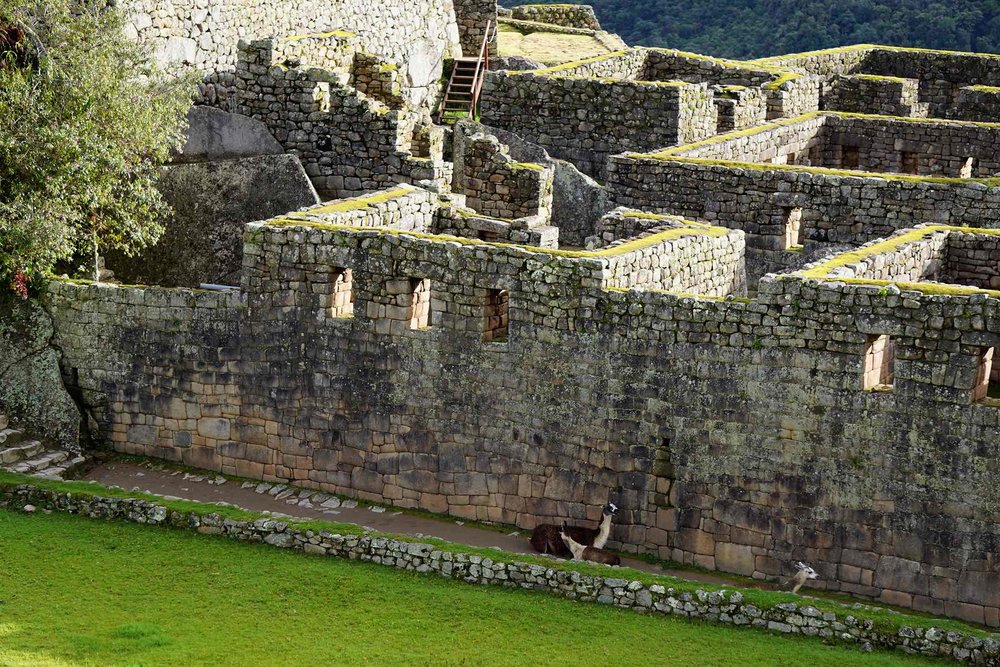
When to Go to Machu Picchu Peru
I went during the rainy season and upon arriving in Hydroelectrica was shocked with how many people were there about to make their way to the town at the base of Machu Picchu – Agua Calientes.
Rainy season means obviously, rain, along with clouds, fog and spurts of limited visibility. And there are days during rainy season that are perfectly clear and sunny.
For example, in the days prior to my trek I heard a lot, “We got lucky with great weather!” so I was hopeful that mine would be the same and thankfully it was!
On the day I was at Machu Picchu, I had incredible visibility. There were some clouds that came in to surround the mountains, often adding to the mystery and intrigue of the site, but then quickly passed by.
However, two different groups of friends of mine weren’t so lucky with weather where rain and fog obstructed most of the views. While their pictures didn’t look like ones you often find through Google Search, they had nothing but great things to say about their experience trekking to Machu Picchu.
It’s hard to predict what the weather will be like, no matter where you are going and when. It’s the weather, you can’t control it. It can rain during dry season, and it can be sunny during rainy season.
I think the most important thing is to pick a time that feels right to you, and to be prepared for any type of weather.
There’s a really beautiful saying I picked up when I was in Norway that says, “There’s no such thing as bad weather, only bad clothing.”
Additionally, if you’re not a fan of crowds, going to Machu Picchu in dry season is going to be much more crowded than in rainy season, possibly infuriatingly so. I was often shocked and put off by the massive amounts of people when I was there, and reminded myself several times to ignore all the people and be patient.
If you think the crowds might affect your experience, consider visiting during during the less popular time of year. But note that even during the off-season Machu Picchu will still be very, very crowded! More than 1 million people visit every year! Roughly 5,000 people visit Machu Picchu every single day.
While you have to book the Inca Trail, Huayna Picchu Mountain and Machu Picchu Mountain months ahead of time, you do not have to book or buy entrance tickets to Machu Picchu early.
In fact, you can book with any number of tour agencies in Cusco the day before you want to leave and you will have an entrance ticket to Machu Picchu at the end of the trek, no problem.
What to Pack Hiking to Machu Picchu Peru
For hiking to Machu Picchu, it's important to be prepared. You'll want to bring:
- Pants, short sleeve shirt, long sleeve shirt and sweater for hiking
- Change of hiking clothes
- Socks and underwear for every day
- Rain jacket, and optional rain pants
- Extra warm layers for night time and sleeping
- Hiking shoes or boots
- Rain poncho (even in “dry” season)
- Beanie, gloves and scarf
- Toilet paper, kleenex, wet wipes
- Snacks - Even though they feed you well at meal times, they do not provide you snacks, and you’ll want snacks. I suggest nuts, dried fruits, chocolate covered raisins or peanuts, crackers, cookies, bars, and Snickers all work great
- Water
- Hydration tablets
- Re-usable water bottle and water purifier tablets/machine
- Sleeping bag suitable for extreme cold
- Towel for showering or for warmth – I only showered the night before Machu Picchu in the hotel room while other showered a few times
- Cash for water, beers, and snacks
- Deck of cards
- Rain cover for your backpack
- Camera
- External battery pack, charger
Limitations to Visiting Machu Picchu
- There are two different time slots every day; 6 am to 12pm and 12 pm to 6 pm
- You can only enter twice during your ticket time. In order to keep the peace, all paths in Machu Picchu are one way. Therefore, you might at some point get trapped close to the exit and therefore must exit instead of going a different route. This means after you exit, you must re-enter and start the circuit or a new circuit again.
- No walking sticks or poles (unless you are elderly or needing assistance)
Other Tips for Visiting Machu Picchu
- Cannot bring in large backpacks, only daypacks of no larger than 20L. This is important if you’re trekking and have brought a large backpack, try to leave it with your guide or your hotel before climbing to the top
- Cannot bring in food
- Bathrooms are only outside so go before you enter. They also do not open until 6 am when the site enters, which is inconvenient if you’re trying to enter then. Since you can leave and re-enter (only one time!), you could use that opportunity to use the restroom (again) if needed.
Booking your trip with Sapphire & Elm Travel means booking with people who know from real, personal experience what the destination is like.
We are in the unique position of giving you real feedback and tips so you can make the utmost of your precious and valuable vacation time.
You’ll return with nothing but incredible stories and fond memories, knowing you did the right options for you.
Contact us to starting planning your trip to Peru.
Save on Pinterest
